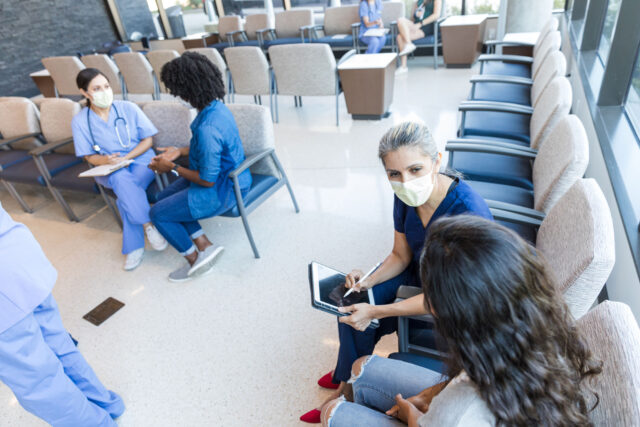About 4 in 10 Californians have some form of public health insurance.
- Public health insurance plans serve low- and moderate-income Californians, elderly and disabled individuals, veterans, and members of the military.
- About one-quarter of publicly-insured Californians also have private insurance—mostly Medicare plus private coverage—blurring the line between public and private coverage.
- The two programs that make up the vast majority of public insurance coverage are Medi-Cal and Medicare. Enrollment in different types of insurance available in the state varies by age and geography.
Medi-Cal covers 14 million low-income Californians, or over one-third of residents.
- Medi-Cal provides comprehensive coverage to individuals with low incomes. Prior to the Affordable Care Act (ACA), Medi-Cal primarily served families and children, the elderly, and people with disabilities. Under the ACA, the program expanded eligibility to most low-income adults in 2014, and California has added coverage for some undocumented residents. The state recently launched CalAIM, an effort to coordinate health and social services for the most vulnerable individuals such as people experiencing homelessness.
- Low-income Californians who are ineligible for Medi-Cal may access a limited version of the program for certain conditions such as pregnancy care or medical emergencies.
- A combination of federal and state dollars fund Medi-Cal. The 2021–22 budget for Medi-Cal is $121.9 billion, including state General Fund contributions of $25.1 billion, but the federal government contributes the majority of funding.
Medi-Cal and Medicare dominate public insurance coverage for different age groups

SOURCE: American Community Survey 2019 data, organized by IPUMS
NOTES: Weighted averages of coverage type for individuals with Medi-Cal or Medicare are shown. Both refers to dual eligibles who are low-income elderly or disabled individuals who have both Medi-Cal and Medicare. The following groups are excluded from calculations: uninsured individuals, those with private health insurance (unless they are Medicare recipients), and a small number with military/veterans’ public coverage but not Medi-Cal or Medicare (making up about 0.2% of residents).
Medicare covers over 6.2 million elderly and disabled Californians.
- Medicare is federal health insurance for elderly or disabled individuals, most of whom made payroll contributions to the program during working years.
- Twenty-three percent of Medicare enrollees in California are Dual Eligibles who can enroll in both Medicare and Medi-Cal. Health care visits covered by Medicare can still produce significant out-of-pocket costs, so private products called “Medigap” plans can fill in Medicare coverage gaps, like copays.
Covered California is a marketplace for private plans, often with public subsidies.
- Covered California is the nation’s first state marketplace for private health insurance plans created under the ACA. Individuals can purchase affordable private coverage through this marketplace.
- About 90% of Covered California purchasers receive assistance with premiums from the state and federal government: about $475 per month on average.
- Under the ACA, individuals with incomes up to 400% of federal poverty ($111,000 for a family of four) who lack affordable employer coverage can receive federal premium subsidies. Additionally, those with incomes up to 600% of federal poverty can receive state subsidies. “Affordable” refers to being affordable for the worker, and does not account for covering a spouse or children; this oversight is known as the “family glitch.”
The COVID-19 pandemic has increased Medi-Cal enrollments.
- Medi-Cal enrollment had been declining before the pandemic, but the state paused the requirement for participants to prove ongoing eligibility during the public health emergency. Along with new enrollments, this pause led to about a 15% increase in Medi-Cal participation from March 2020 to November 2021.
- The program also provides COVID-19 testing and treatment to all Californians, regardless of immigration status, contributing to public health efforts to reduce virus spread.
The role of public health insurance is growing.
- The 2014 ACA expansion of Medi-Cal to most low-income adults was followed by state-legislated expansions to low-income children, young adults, and older adults—all regardless of immigration status—between 2016 and 2022.
- In the 2022 budget, the governor and legislature included the expansion of Medi-Cal to all low-income individuals, regardless of immigration status, beginning in 2024.
- As the state’s population ages, Medicare is likely to play a greater role in California’s insurance landscape. Private insurance—especially employer insurance—still covers the majority of Californians, but the role of public insurance is growing.



